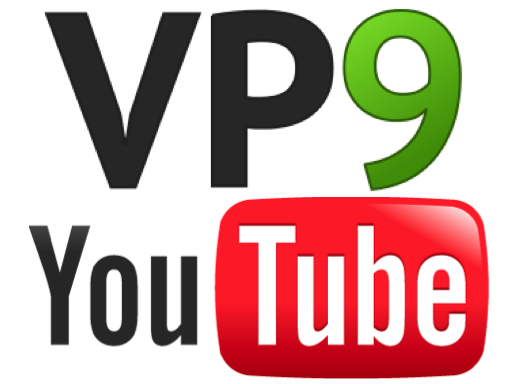What Is YouTube's VP9 Ultra HD Streaming Technology?
With the rise of 4K television, Google is preparing to stream content in Ultra High Definition on YouTube with its VP9 codec technology.

To watch any video content — whether on cable TV, DVD, Blu-ray, Netflix or YouTube — your device needs a way to understand the data and convert it into an image. That's the job of video codec software. With 4K content,which has four times the resolution of HD, there is a need for new codecs that can deliver the quality of Ultra HD content, yet compress it down so all that data can fit within the bandwidth of people's home Internet connection and perhaps onto discs someday. With the VP9 codec, Google is working to fill that void.
What is VP9?
VP9 is a new video codec that will compress video files to half the size that the current encoding technology, called MPEG-4 or H.264, can achieve. More important, it will be used to compress video files and streams at 4K resolution, which is four times higher than HDTV resolution. VP9 is part of WebM, an open-source project sponsored by Google for creating technology for use with media on the Internet. Google has announced plans to use VP9 for 4K YouTube videos. But VP9 rivals another technology, called HEVC, that also seeks to be the standard for 4K TV.
MORE: TV Buying Guide
What is a codec?
A codec (an abbreviation of the term "coder-decoder") is software that uses an algorithm to systematically compress raw video data into a compact form fit for efficiently broadcasting, transmitting over an Internet stream or storing on a DVD or Blu-ray disc, for example. Without a codec, there simply wouldn't be enough bandwidth or storage space for HDTV to be possible.
At the receiving end, the same codec in your TV, computer or disc player uncompresses the data to display the video on your screen. Codecs also remove some detail from video to reduce its size, and a high level of compressions can noticeably degrade image quality. Most pay-TV services use aggressive compression to get all those channels into your cable or satellite receiver, which is one reason the video from your cable box does not look as good as that from a Blu-ray. A good codec will compress video down while causing few defects due to overcompression.
High-definition video can take a lot of data. A full-HD image has about 2 million pixels and potentially millions of colors making up an individual frame, with hundreds of thousands of frames making up a movie.
Why use VP9 for 4K video?
The current MPEG-4/H.264 codec makes it possible to compress the huge amount of information in a film so that it can stream over online video services such as Netflix or YouTube. Those high-definition images are in either 720p resolution (1280 x 720 pixels, or 0.92 million pixels) or 1080p resolution (1920 x 1080 pixels, or about 2 million pixels). The images from a video in the 4K format, also known as Ultra HD, have about 8.3 million pixels (3840 x 2160 resolution). Such a huge jump in detail requires a better way to compress the data in order to transmit or store it. VP9 is twice as efficient as H.264. The result is that current HD content will need only half the data to be streamed, and streaming 4K content will be viable.
Get instant access to breaking news, the hottest reviews, great deals and helpful tips.
What content will use VP9?
Google is ostensibly responsible for the creation of the VP9 codec and has already announced it will be used for 4K content on YouTube. It will also likely be used by the Google Play streaming video service. Each individual service will have to decide whether to start sending data using VP9 instead of the current H.264 codec. And even once content is being made using VP9, there will have to be compatible hardware to run it, from TVs, to set-top boxes to mobile devices. Google has already announced some partners, including chip and component makers ARM, Broadcom, Intel, Marvell, MediaTek, Nvidia, Qualcomm, RealTek and Sigma, as well as TV makers LG, Panasonic, Philips, Samsung, Sharp, Sony and Toshiba.
The other wrinkle is that there is another 4K codec called HEVC (High Efficiency Video Coding) or H.265, developed by the international organizations that created H.264 (as well as its predecessor, MPEG-2). Some video services, such as Netflix, and hardware companies may support only HEVC. Others may support only VP9. Still others may support both 4K codecs, as Samsung and Sony are doing with upcoming 4K televisions.
MORE: Where can you get 4K video?
How is VP9 different from HEVC?
There are technical similarities between VP9 and HEVC, and the overall goal of the two codecs is the same: compress video to use half the data currently required to stream HD video and provide enough compression for 4K video to become viable within the limits of high-speed Internet in people's homes. The biggest difference is that VP9 is an open-source project that can be used by anyone royalty-free, whereas HEVC will require a license to be used. Whether there is an actual difference in compression effectiveness and picture quality remains to be seen when 4K content created with both codecs is widely available.
Can I watch VP9 content now?
Not really. Even though Google has pushed support of VP9 to its Chrome browser, only a few YouTube videos are using it and likely only as a test. (You can right-click a video in the HTML-5 version of the YouTube player and click on the "stats for nerds" choice to see what codec is being used.) Even when YouTube or another service begins streaming more content with VP9, you will only be able to watch it with a compatible television, computer or mobile hardware.
How did VP9 come about?
A company called On2 Technologies created the TrueMotion and TrueMotion2 codecs. For the next version in 2000, the company's CEO, Daniel B. Miller, renamed it Video Processing 3, or VP3. VP3 was made open-source in September 2001, and is now called Theora. Over the years, On2 Technologies created improved versions such as VP4, VP5, etc. The company was acquired by Google in 2010, making future codecs open-source like Theora. VP9 is just the latest of Google's open-source projects meant to improve the delivery of content on the Internet.
Follow Kevin Ohannessian at @khohannessian and on Google+. Follow us @tomsguide, on Facebook and on Google+.
Kelly Ohannessian is a freelance writer and editor. With more than 15 years of experience, she works with a focus on covering the creative aspects of the gaming industry. Her articles have appeared on Medium, Fast Company, Tom's Guide, Laptop Mag, Gamespot, and many more. Currently, she works as a manager at Brooklyn Game Lab.
-
edrt2 I absolutely love this program, it's actualy the most financially rewarding I've ever had. You can work where ever, when ever, and as much as you want. Earn up to $100 in a day, pretty cool!! I can't believe how easy it was once I tried it out. Linked here Pow6.comReply
